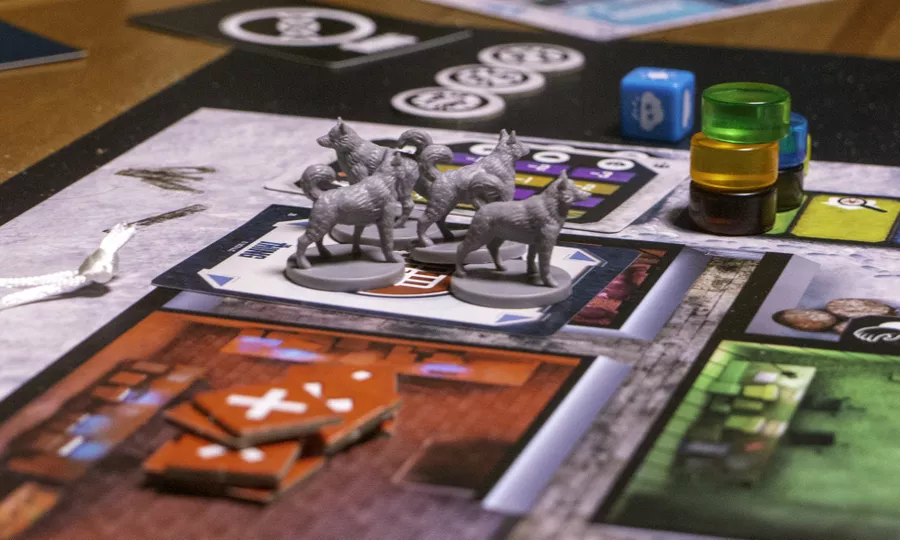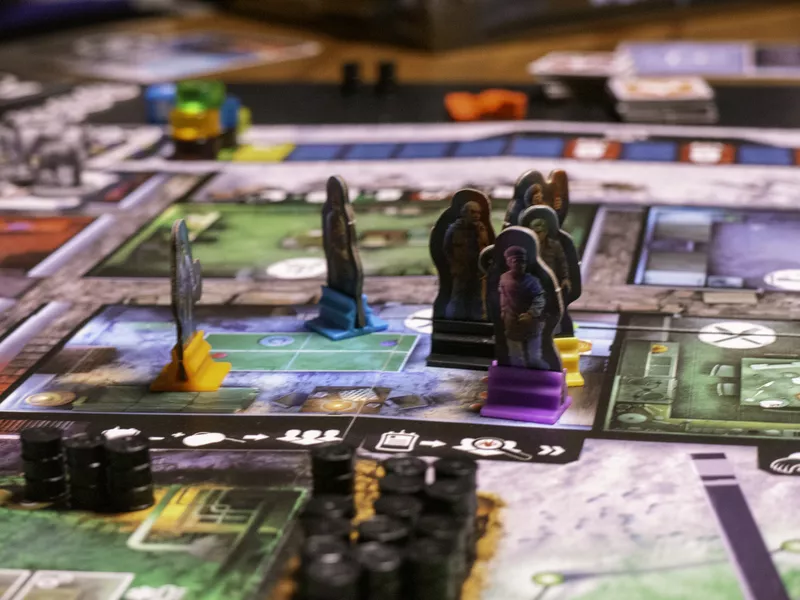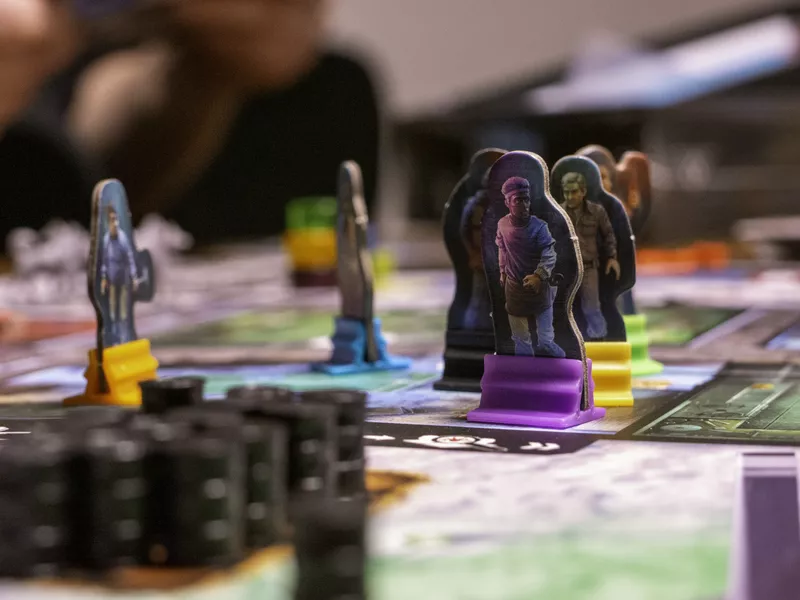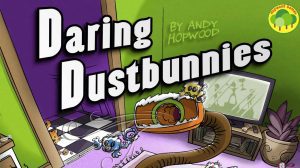Disclosure: Meeple Mountain received a free copy of this product in exchange for an honest, unbiased review. This review is not intended to be an endorsement.
The connection between board game design and intellectual properties is frequently superficial. The typical approach for such games is to create a generic board game system that can accommodate a variety of themes and then gradually introduce rules to give the illusion of capturing the essence of those IPs. It is uncommon to encounter a game where the IP takes point, and the game designer is trying their utmost to ensure that the rules serve the franchise effectively.
Fortunately, The Thing Boardgame is on the other side of this situation. This is one of the few games where every line of rule makes sense in context while still offering a plateful of systems that one would expect in a well-designed cooperative game. But before I chirp about my praises and concerns, you should probably get to know the game first.
The Thing Boardgame is based on the 1982 film of the same name by John Carpenter. The film, proudly sitting on the horror sci-fi throne, is about a shape-shifting alien life form that can spread like a virus and takes place in a research station in Antarctica. At the start of the game, one of the players starts out as an infected Alien player.
Now, if this sounds like a social deduction game, you are one-third correct. Social deduction games are often labeled as “simple” due to their limited components, such as cards. Not here. This game has a wide range of systems at play, like worker placement, hand management, resource management, and cooperation. It’s less like Werewolf and more like Dead of Winter if it was fun.

Under the Antarctic Ice
Because of this, I’m not going to go into as much detail about the rules as one would expect in a review. This is more of a general impression of what to expect, and let me tell you, expect pain.
You’ll notice this bit of suffering by rolling the weather die to start the round. The result of this evil die is going to tell you how much fuel you need to spend for both the Boiler Room and Generator. You are in a base in Antarctica, after all, so you have to keep the lights on and the place warm. Also, that fuel is finite, already signaling to you and everyone on the table that time is not on your side.
The situation becomes even more precarious if the Generator and Boiler Room are not properly maintained. If the Generator runs out of fuel and sustains maximum damage, you’ll be left to operate in darkness, with inefficient and almost random actions. However, if the Boiler Room fails, the uninfected players face a dire situation. Not only is the Boiler Room permanently destroyed, but a countdown timer begins, and everyone risks freezing to death—the duration of this timer is determined by the roll of the weather die. To reset the timer, you must permanently burn down a room in the base with fire weapons.
Obviously, we can’t let that happen. After the weather die is rolled and the necessary fuel is depleted, the players will then assign themselves to rooms they want to work in and give an action card to the current leader of the round, facedown. What’s important here is the action card will be shuffled into a deck, meaning the card the player submits might not be the one they will be using. That decision is solely based on the Leader’s discretion.
Get the Hell Away! That’s Not a Dog!
Before the Leader’s turn, encounters involving multiple players in the same room require a Contagion check. Two Contagion tokens are placed for the other players to randomly draw. If the active player is uninfected, both tokens represent humans. However, if a player is infected, they have the option to include one infected token among the two. This means that even if the infected player intends to spread the infection, there is a 50% chance of failure.
Once the encounters have been resolved, the Leader shuffles the deck and reveals the top card. This card must be assigned to one of the players, and the chosen player becomes exhausted for that turn. The cards come in three varieties: Repair, Use, and Sabotage. A Repair card allows the player to remove damage from the assigned room, as the name suggests. A Use card enables the player to activate the room’s specific ability or function. In contrast, a Sabotage card inflicts damage on the assigned room instead of repairing or using it.
The Leader can stop at any time after the first card, which then leads to the next phase where players will go to the Rec room to discuss amongst themselves who they suspect is infected. If Blood bags are used from the Research room or someone uses a flamethrower with a copper wire, tests can be performed to reveal the player’s status. After the discussion and tests, a new round begins.

Fueling an Escape Plan
As for the end game, there is a Helicopter and “Snow Cat” vehicle on the base that need to be fueled and repaired before they can be used for escape. Additionally, the keys to these vehicles must be found in the warehouse. As a third option, an S.O.S signal can be sent by repairing the radio room and using it.
Regardless of which escape option is chosen, a voting procedure begins where players decide who gets to board the vehicle and who must be left behind. The Alien players aim to either have at least one human remain on the base or secure a spot on the escape vehicle for themselves. Conversely, the Human players want to ensure that no Alien players board the helicopter while not leaving behind any Human players at the base.
To give you a better feel for how this all plays out, each room has its own unique functions, like the Research room requiring players to search through a bag for viable blood bags or drawing equipment cards from the Warehouse. Dogs randomly roam the base, and being alone with a dog carries a 20% chance of infection. Weapon cards can be used to attack the alien, burn down areas, or prevent Contagion checks. When an Alien player is revealed, they program which rooms to attack, either damaging them, blocking access, or assimilating the dogs and other players. In essence, there are numerous complex mechanics and layers to keep track of.
I welcome this complication too, as social deduction games often dress themselves in simplicity to attract large groups of people. The Thing isn’t afraid of being a bit harder to figure out in service to create an immersive experience and capture the energy of the original film. Of course, having such a goal would mean that a rulebook needs to clearly spell out these intricacies.
A Painful Read
Unfortunately, it doesn’t. I would go so far as to say that I cannot recommend this game for casual play, primarily due to the oddity of its rulebook. Comprehending the rules will require an excavator, not just a shovel, to dig through the incoherent information. When even those creating custom player aids admit they’re unsure if their interpretations are correct, it’s a glaring issue. A rulebook should bridge the gap between skepticism and enthusiasm, but in this case, that bridge is akin to a tightrope weighed down by a pregnant sperm whale, making the journey excessively daunting.
It’s perplexing to critique this game given the substantial effort put into it. This is a project that was successfully funded on Kickstarter, went through the printing process, underwent rigorous playtesting, and involved paying artists to create an appealing visual design. With all these steps and resources dedicated to the game’s development, it’s baffling why the rulebook appears to have been neglected.
Fortunately, the light in this dark tunnel that is drawing your attention is the experience it provides. Simply put, The Thing does an amazing job of grabbing you by the throat and throwing you into Antarctica with a few of your buddies. As a social deduction game, it also fixes quite a few of the problems the genre is known for.

Erasing the Cliches
Most social deduction games often leave some players in a passive role, merely absorbing the chaos around them. However, The Thing breaks that mold by tapping everyone on the shoulder and demanding their active participation. It compels players to openly discuss their intended room choices, identify problems that need addressing, and scrutinize one another’s motivations. This game ensures that no one can simply sit back as a casual observer.
Even the discussions in the Rec Room can sometimes feel tougher than Teddy Roosevelt, as players accuse one another based on encounters with dogs, interactions between players, or questionable decisions regarding which areas to visit. Another surprise is that an Alien being discovered isn’t the end of them. If anything, the game simply shifts into a new direction.
When an Alien player is exposed, they gain the ability to attack locations by secretly assigning their strength tokens to facedown location cards. This leaves the surviving humans guessing where the Alien will strike next. After all players have placed their figures in their chosen rooms, the Alien reveals the locations they’ve targeted for attack. At this stage, it becomes a numbers game, with the Alien needing to commit more strength tokens than the number of players present in a room to successfully overpower them—unless, of course, fire is involved.
For those unfamiliar with the original movie, the Alien entity can only be harmed by fire. Any fire-based weapons, including the coveted flamethrower, force the Alien to retreat and discard one of their strength tokens. This rule applies even in situations where the Alien technically has enough strength tokens to overpower the human players in a given room. As a result, there will be tense moments where the Alien player must genuinely worry about which human might possess the means to permanently damage them, turning the situation into a gripping mind game for both sides.
A Fragile Experience
While all this sounds fantastic in theory, the reality is that the game experience can be somewhat fragile and inconsistent. Even before delving into the setup instructions, the rulebook politely warns that the game’s overall enjoyment hinges heavily on the skill level of the Alien player. There have been instances where the Alien was revealed as early as the 2nd round, making the game feel more like a straightforward cooperative game.
On the other extreme, I’ve had games where the Alien was exposed, someone had a flamethrower, and we were just one turn away from a devastating frozen demise. The game’s systems attempt to mitigate some of these issues, but can only do so much to downplay them rather than erase the potential for unbalanced or anticlimactic gameplay entirely.
The Thing admirably translates the paranoid thrills of the iconic horror film, but it struggles to consistently nail that tense, atmospheric experience. The game’s complex rules and questionable balance mean each session hinges heavily on the skill levels of the players, especially the Alien player. The rulebook is another drawback, as it makes it hard for players from outside the hobby to indulge themselves in the experience.
Yet I also cannot help but be fascinated by the offer here. It’s a social deduction where no one is left behind, the traitor reveal isn’t the end of the world, and there is discussion that goes far beyond body language or social ticks of other players. It is a daring game that isn’t afraid to jump over hurdles to stand itself out, even if it means a few bruises along the way. While the execution may be imperfect, The Thing deserves credit for its ambitious attempt to breathe new life into the genre through an engrossing thematic adaptation.












Add Comment